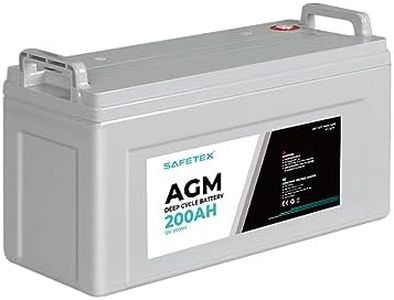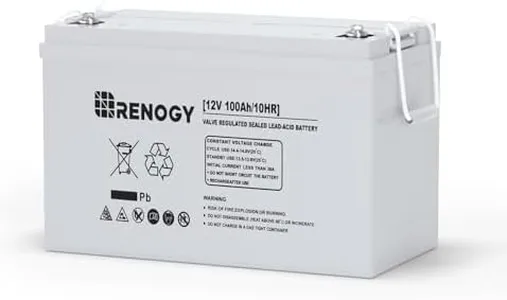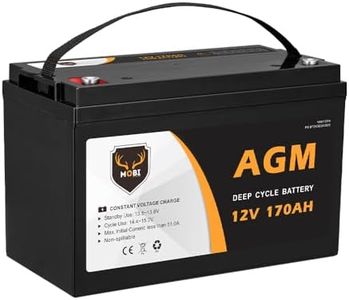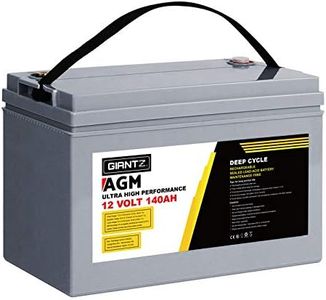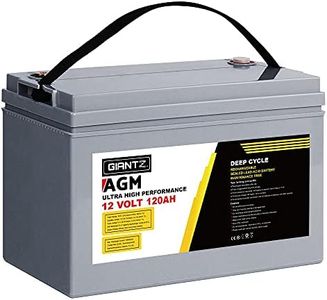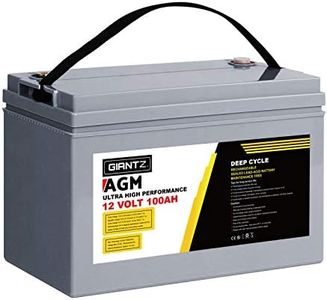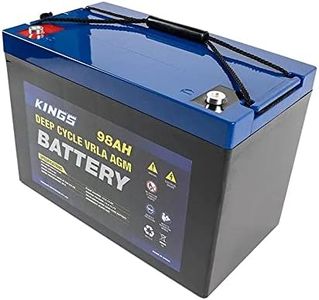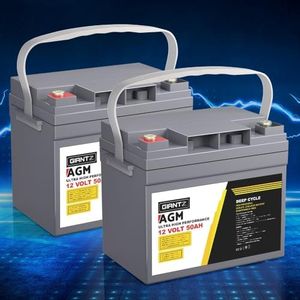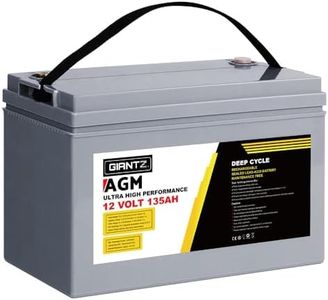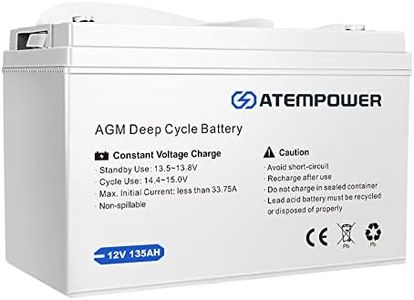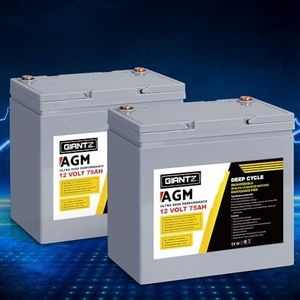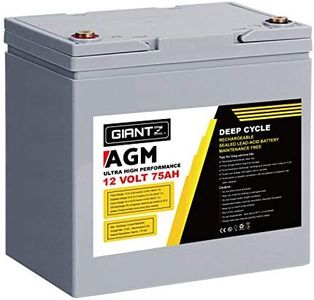We Use CookiesWe use cookies to enhance the security, performance,
functionality and for analytical and promotional activities. By continuing to browse this site you
are agreeing to our privacy policy
10 Best Deep Cycle Agm Battery For Rv
From leading brands and best sellers available on the web.By clicking on a link to a third party's website, log data is shared with that third party.
Buying Guide for the Best Deep Cycle Agm Battery For Rv
When selecting a deep-cycle AGM (Absorbent Glass Mat) battery for your RV, it’s important to think about how you plan to use your RV, how long you spend off-grid, and what appliances you want to power. AGM batteries are popular because they are sealed, require no maintenance, and are generally safer and longer-lasting than traditional lead-acid batteries. To find the best fit, it’s helpful to understand the key features that determine performance, longevity, and suitability for your needs.Battery Capacity (Ampere Hours, Ah)Battery capacity, usually measured in ampere hours (Ah), tells you how much energy the battery can store and deliver over time. Higher capacity means your battery can run your appliances for longer periods before needing to recharge. Typical AGM batteries range from around 50Ah to over 200Ah. For short weekend trips with only lights and basic electronics, a smaller capacity (50-100Ah) might suffice. For longer stays or if you need to power more energy-hungry devices like inverters, refrigerators, or air conditioners, look for higher capacity (100Ah and above). Think about the devices you’ll run in your RV and their total power consumption to estimate the appropriate capacity.
VoltageMost RV battery systems use 12-volt batteries, but some setups use 6-volt batteries in pairs or more for different wiring options and longer battery life. Make sure to match the battery voltage with your RV’s electrical system. For those with simple needs, a single 12V battery is usually enough, whereas more complex or heavy-use systems may benefit from connecting multiple batteries in a series or parallel as needed.
Cycle LifeCycle life refers to how many times a battery can be charged and discharged before its capacity significantly degrades. This is a critical factor for RVers who frequently camp off-grid (boondocking) and rely heavily on battery power. Deep-cycle AGM batteries typically offer anywhere from several hundred to a few thousand cycles. If you only take your RV out a few times per year, a battery with a lower cycle life might be all you need. However, for frequent travelers, investing in a battery with a higher cycle life ensures better value and reliability over time.
Size and WeightThe physical size and weight of the battery need to fit the available space in your RV’s battery compartment and be manageable for installation. AGM batteries can be quite heavy, especially at higher capacities. It’s important to measure your battery storage space, check your RV’s weight limits, and make sure you can safely transport and install the chosen battery. Prioritize size if your space is limited, or weight if you’re close to your vehicle’s weight capacity.
Discharge Rate (Depth of Discharge)Depth of discharge (DoD) describes how much you can use your battery’s capacity before recharging. Most AGM batteries can handle repeated deep discharges, but their lifespan will last longer if you avoid draining them completely. Batteries rated for higher DoD can be discharged more deeply without damage, making them ideal for those who often use their battery to low levels. If you mainly use shore power or only rely on your battery occasionally, lower DoD may be acceptable.
Operating Temperature RangeAGM batteries perform better within certain temperature ranges. Extreme cold or heat can affect capacity and lifespan. If you camp in very cold or very hot environments, choose a battery noted for good performance in those conditions. For most users who stick to moderate climates, standard operating ranges are sufficient, but extreme travelers should check specifications carefully.
Maintenance and Safety FeaturesOne of the big appeals of AGM batteries is their maintenance-free design and enhanced safety compared to traditional flooded lead-acid batteries. Features like spill-proof construction, vibration resistance, and sealed cases are common. If you store your RV for long periods or want peace of mind about leaks and off-gassing, focus on batteries that highlight these safety and maintenance aspects.
